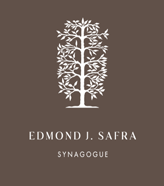Perashat Naso
Home > Rabbi's Weekly Message > Perashat Naso
Perashat Naso
Friday, May 29, 2015We all know of the concept of being a “copy cat”. If we try to remember the many times somebody tried to copy us or we tried to copy them, we can go back to our days of childhood. When we played with a toy, our friend wanted to play exactly with that same toy. In school, when we received a good grade on a project, our friend wanted to do the same project to receive a good grade as well. As teenagers, when we bought certain clothing or a special car, again our friend wanted to copy us and buy the same thing. Even as adults, when we start a business and we are successful with certain customers, our friend will start a similar business and tries to copy us and take our customers away (mind you, they call that competition!).This is the story of humanity; one person tries to copy, duplicate or imitate others.
Perashat Naso dedicates 72 verses to repeat a 6-verse paragraph 12 times. The paragraph says: “His offering was: one silver bowl, its weight a hundred and thirty shekels; and one silver basin of seventy
Shekels in the sacred shekel; both of them filled with fine flour mixed with oil for a meal offering. One gold Ladle of ten shekels filled with incense; one young bull, one ram, one sheep in its first year for an elevation-offering; one he-goat for a sin-offering; and for a feast peace-offering: two cattle, five rams, five he-goats, five sheep in their first year.” The only difference in each paragraph is the name of the Chieftain of each tribe.
Could it be that each Chieftain was a “copy cat” of the other? Why did they bring the same things? Why was it necessary for the Torah to write the same description of the offering 12 times? It could have said it in one 6-verse paragraph and added all the names of the Chieftains. (By the way, it could have shortened the reading of the Torah, which would have been quite appreciated by the reader and the congregants alike!).
The Midrash explains that even though the 12 offerings were identical, each alluded to the special mission of its tribe so that each was unique in its spiritual essence. In other words, the Torah is trying to educate us in several aspects. At times, even though the material items that we contribute are the same, however the intention, style and dedication are different as each person is different. At times when we do the same things as others, however, it is the sum total that counts. At times even though we may be accomplishing the same things as others, it is our participation that will make the difference. Even one individual can make the difference as our Sages say: “even though, it is not up to you to finish the task; however you are not absolved from doing it.”
Dec 5 2025
Kislev 15 5786
